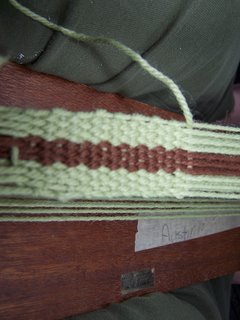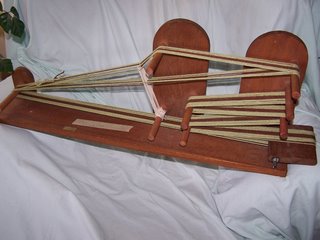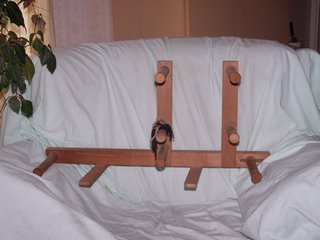 Louise (left) and Fran (right) spinning (heritage craft) in Fran's home
Louise (left) and Fran (right) spinning (heritage craft) in Fran's home(a heritage house) looking somewhat heritage in their shawls.
That's Lily in the middle.
This blog shows my ongoing enjoyment of fibre arts (spinning, weaving, crochet, learning to knit, felting, etc) and may also contain some other of my crafts/skills in other areas.
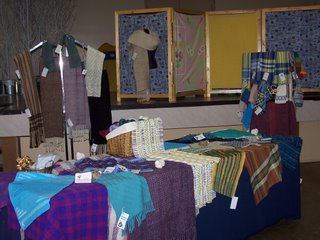 All these wonderful items on the table and the stands behind it, even on the stage. See what I mean when I say I am blessed to have these ladies teaching me to spin and weave? Very talented!!
All these wonderful items on the table and the stands behind it, even on the stage. See what I mean when I say I am blessed to have these ladies teaching me to spin and weave? Very talented!!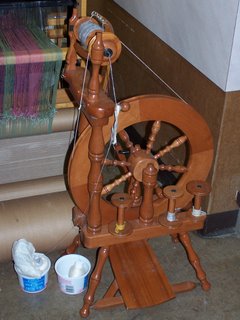 Here's one for Kiwi! This is Louise's spinning wheel. It's an Ashford Traveller, made in New Zealand. I think this wheel is really nice and would love to have one, or maybe better yet is the Ahsford Joy (ultra compact and ready to go).
Here's one for Kiwi! This is Louise's spinning wheel. It's an Ashford Traveller, made in New Zealand. I think this wheel is really nice and would love to have one, or maybe better yet is the Ahsford Joy (ultra compact and ready to go).
 Notice the flower pattern, and how there is a thin purple stripe in the pink and a thin pink stripe in the purple. The colors are the warp and the white is the weft.
Notice the flower pattern, and how there is a thin purple stripe in the pink and a thin pink stripe in the purple. The colors are the warp and the white is the weft. Here are a couple close ups of the shawl after it was cut off the loom. It still needs to be wet finished (also called "fulled") which Louise will do at home.
Here are a couple close ups of the shawl after it was cut off the loom. It still needs to be wet finished (also called "fulled") which Louise will do at home.
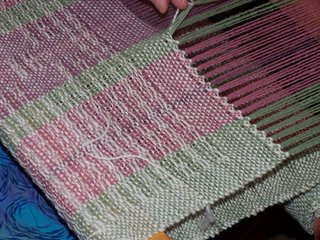 Another angle of the hem stitiching Louise is doing. Here you can see a bit more of the pattern of the weaving.
Another angle of the hem stitiching Louise is doing. Here you can see a bit more of the pattern of the weaving.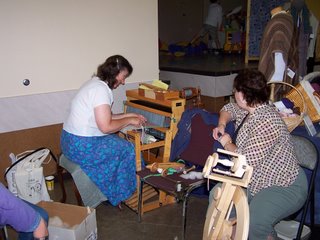 Here is Louise on the loom and Lynnette sitting at her wheel watching Louise. We're all finished spinning at this point and only the hemstitiching needs to be done on the shawl then it can be cut off the loom.
Here is Louise on the loom and Lynnette sitting at her wheel watching Louise. We're all finished spinning at this point and only the hemstitiching needs to be done on the shawl then it can be cut off the loom.
